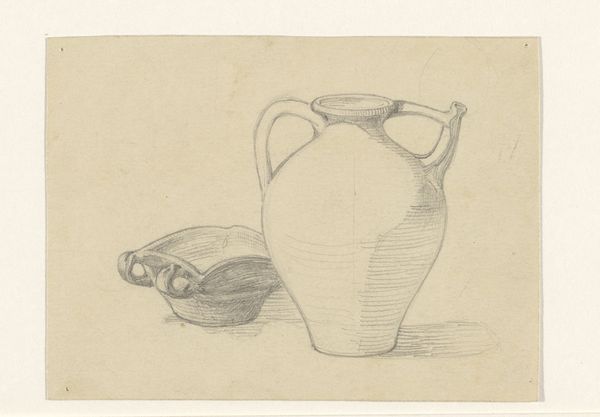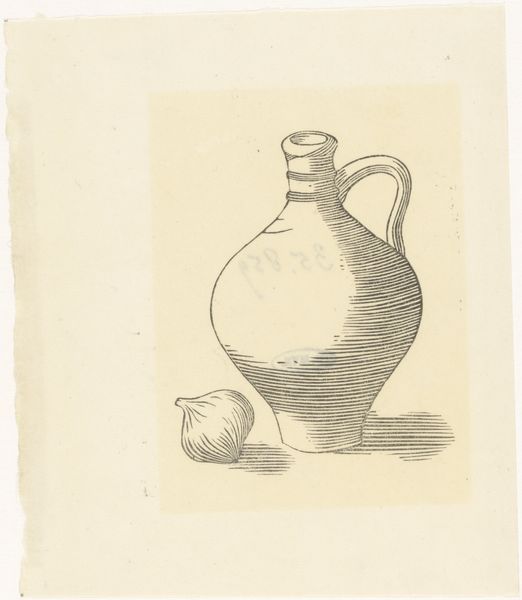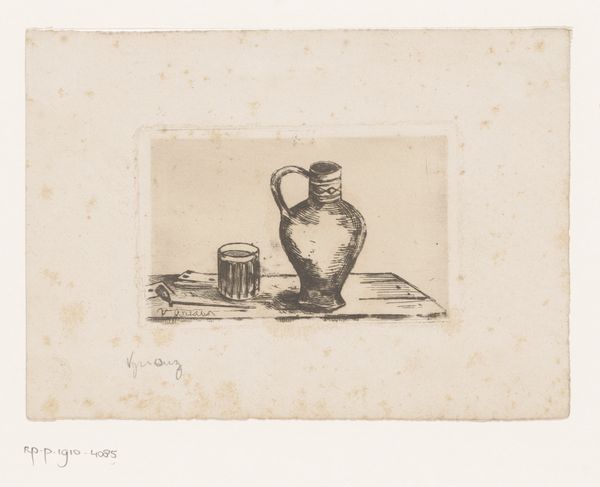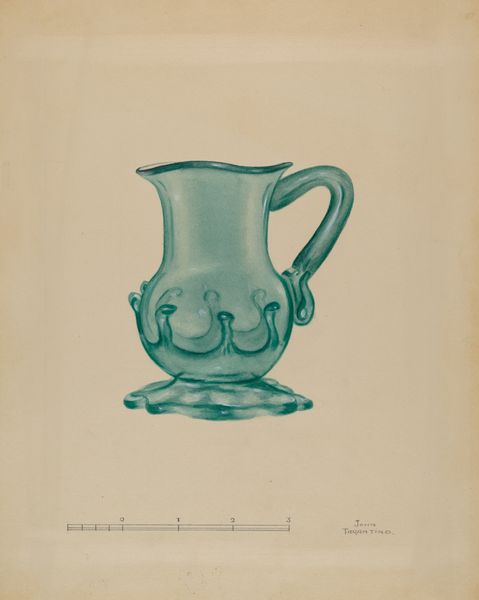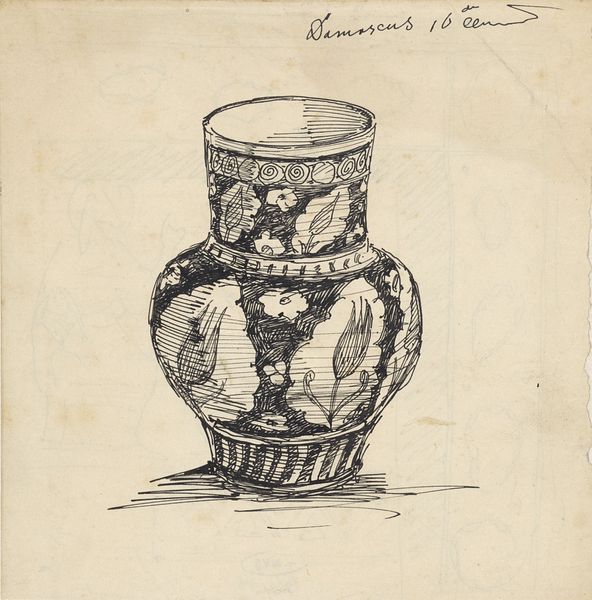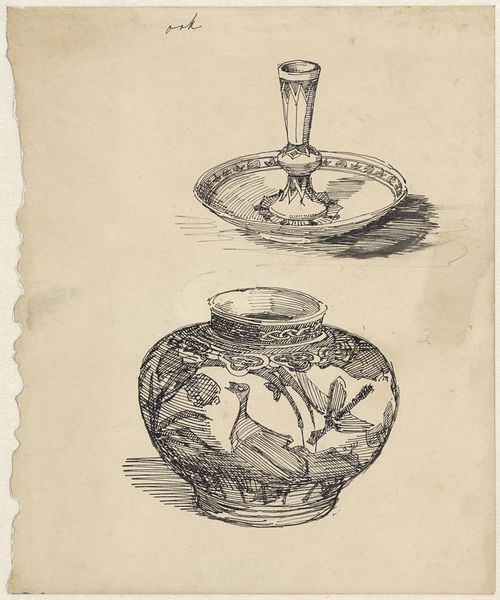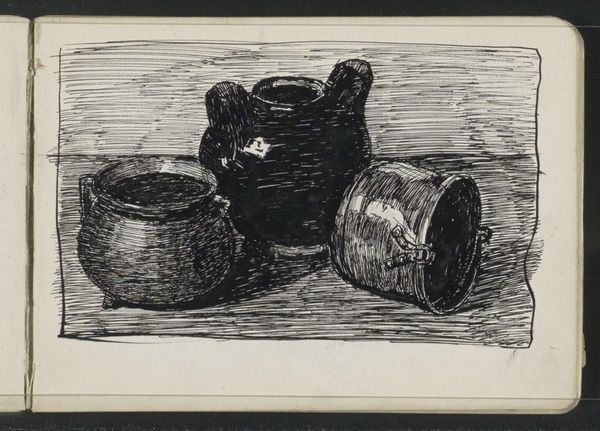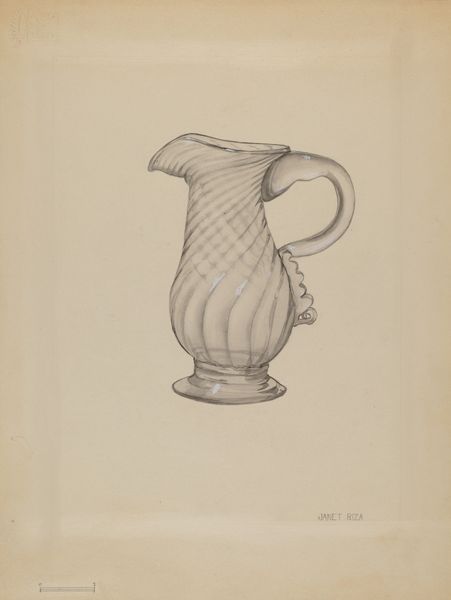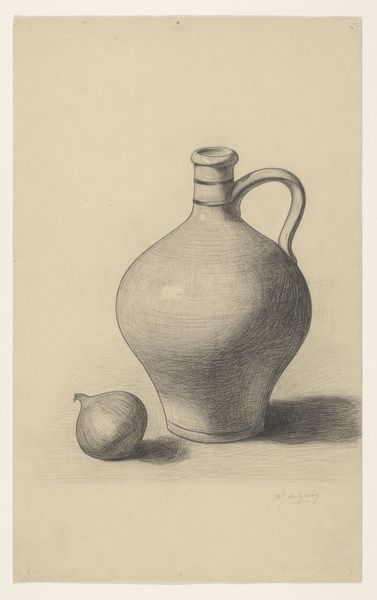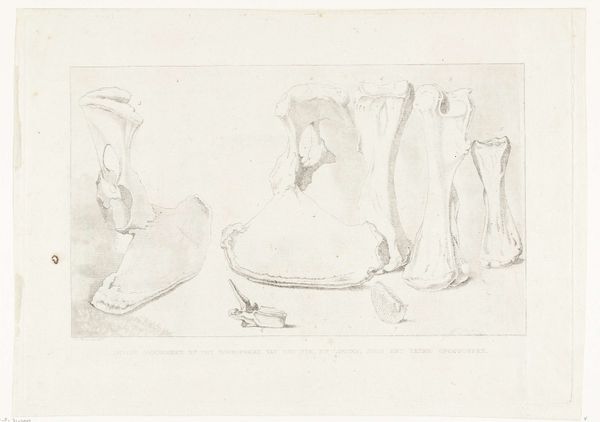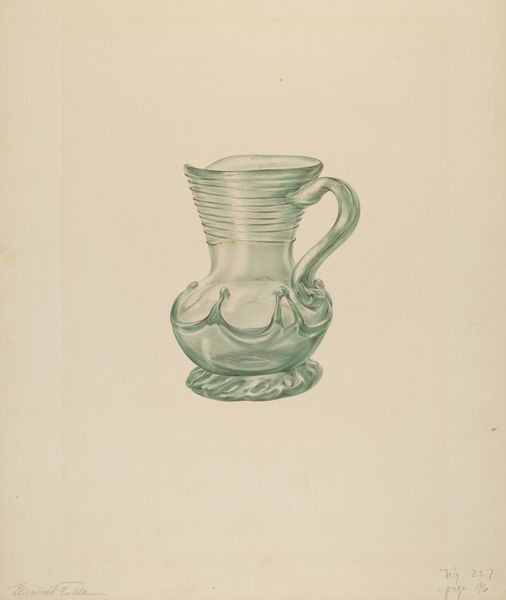
drawing, etching, ink
#
drawing
#
art-nouveau
#
pen sketch
#
etching
#
old engraving style
#
vase
#
ink
#
pen-ink sketch
#
sketchbook drawing
Dimensions: height 100 mm, width 127 mm
Copyright: Rijks Museum: Open Domain
Curator: Before us, we have Julie de Graag's "Still Life with Jug and Ashtray," created around 1900. This work is an etching rendered in ink. Editor: It has such a quiet, contemplative feel, doesn't it? The monochromatic palette really emphasizes the geometric simplicity of the forms. There is something deeply personal evoked here, almost intimate. Curator: Indeed. Look at how she uses line weight to create volume and depth. The cross-hatching on the jug is particularly effective. And the economy of line in depicting the ashtray... it's masterful. I read a structured composition, a testament to the formal considerations that De Graag brought to her practice, revealing an underlying grid and careful placement. Editor: But wouldn’t you say there’s also a deliberate statement about domesticity, maybe even confinement? The ashtray, a symbol of personal habits, is placed alongside a simple water jug, hinting at the daily routines of women within the home at the turn of the century. Curator: I acknowledge the symbolic interpretation, but I tend to perceive the work as more involved with surface. De Graag manipulates her medium with skill to explore texture—notice how the lines both define the objects and exist independently as graphic marks. Editor: Precisely! And doesn’t the placement within the Rijksmuseum—a Dutch national institution—add another layer? It speaks to the evolving recognition of women artists and their contributions to cultural narratives that are commonly still quite male centric. We may also wonder whether the artist felt that tension. Curator: An astute observation that situates the artwork within complex sociopolitical dialogues. De Graag’s skillful articulation of visual phenomena is worth further appreciation beyond art historical tropes, I think. Editor: Absolutely. The beauty and simplicity draw us in but beckon deeper investigation. It’s an exquisite intersection of form and historical content.
Comments
No comments
Be the first to comment and join the conversation on the ultimate creative platform.
